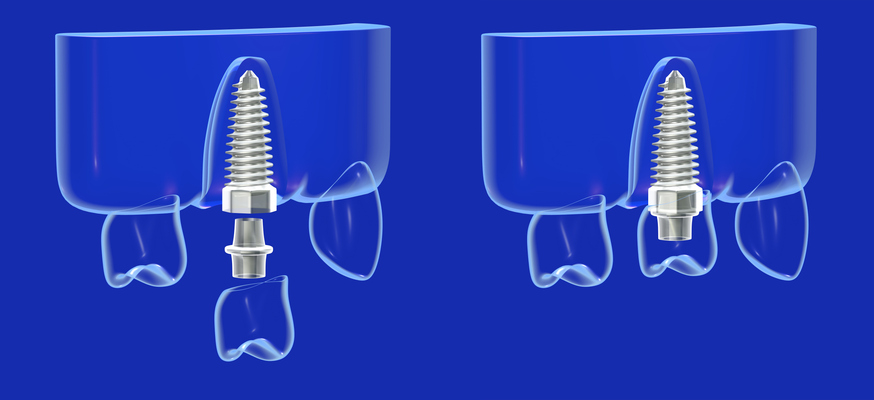
Immediate vs. delayed implant placement in maxilla

Immediate single-tooth implant placement may demonstrate outcomes comparable to delayed implant placement.
Prior research has found that compromised alveolar sockets may influence the outcomes of immediate implant placement. As a result, researchers have previously suggested that patients should receive delayed implant placement in combination with bone grafting and/or soft tissue grafting. However, there have been few studies on the outcomes following immediate implant placement in sites with buccal plate defects in the maxillary esthetic region.
In a clinical trial published in the Journal of Periodontology, researchers examined the outcomes in 40 patients who received either immediate implant placement in postextraction sockets with buccal bony defects greater than or equal to 5 millimeters (n = 20) or conventional treatment with delayed implant placement following alveolar ridge preservation in the esthetic zone (n = 20). The patients presented with a single failing tooth in the frontal region of the maxilla.
After a follow-up of 10 years, the researchers found that there were no statistically significant differences in marginal bone level changes, buccal bone thickness, clinical outcomes, esthetics and patient satisfaction between the two groups.
The findings indicated that immediate implant placement may be an effective treatment option in patients with failing teeth. Because immediate implantation may reduce the treatment duration and number of required procedures, clinicians should consider discussing the benefits of immediate placement with patients during the decision-making process.
Read more: Journal of Periodontology
The article presented here is intended to inform you about the broader media perspective on dentistry, regardless of its alignment with the ADA's stance. It is important to note that publication of an article does not imply the ADA's endorsement, agreement, or promotion of its content.